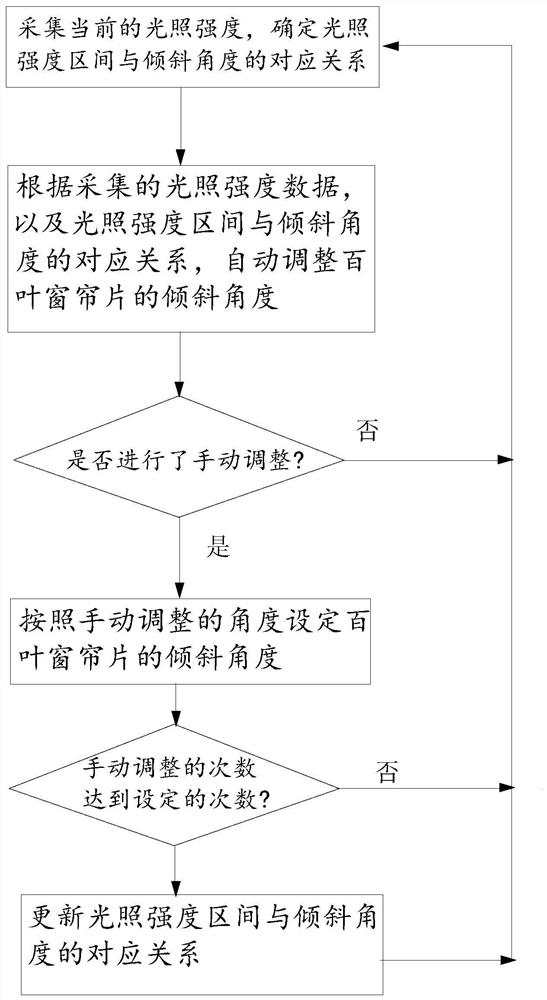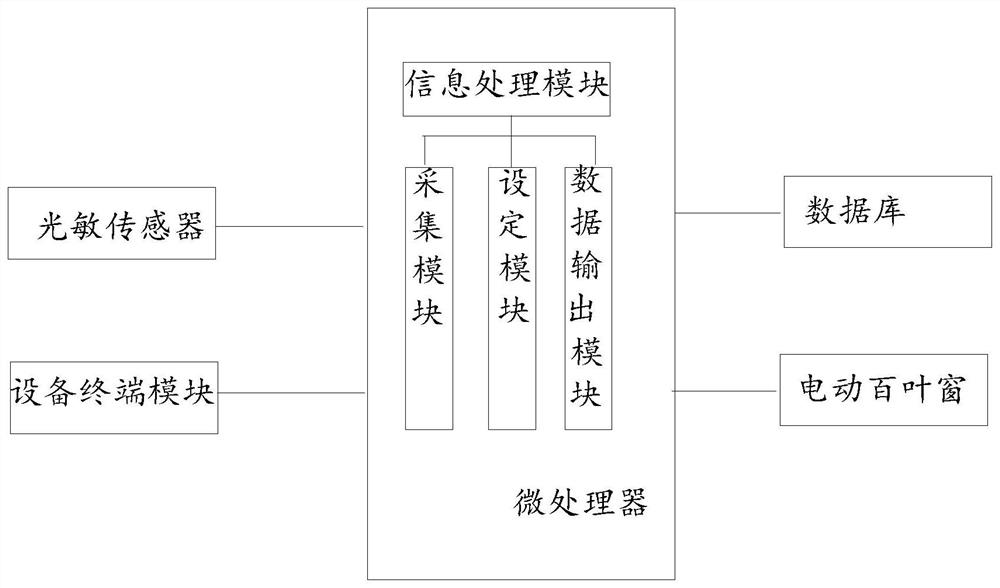A photosensitive shutter adaptive control method and system
An adaptive control and shutter technology, applied in shutter-related fields, can solve problems such as inconvenience and inability to meet demand, and achieve the effect of improving the accuracy rate
- Summary
- Abstract
- Description
- Claims
- Application Information
AI Technical Summary
Problems solved by technology
Method used
Image
Examples
Embodiment 2
[0056] This embodiment provides a photosensitive shutter adaptive control system, such as figure 2 As shown, it includes a photosensitive sensor, a microprocessor, a device terminal module, a controller and an electric shutter, the photosensitive sensor is connected to the microprocessor, and is used to collect light information of the external environment and output it to the microprocessor; the device terminal The module is connected to the microprocessor, which is used to record the adjustment information of the user to the shutter and transmit it to the microprocessor; the microprocessor is connected to the controller, and outputs instructions to the controller; the controller is used to directly control the electric shutter, according to The microprocessor outputs instructions to adjust the inclination angle of the venetian blinds. The microprocessor executes the steps described in the photosensitive shutter adaptive control method described in the embodiment.
[0057] ...
Embodiment 3
[0066] This embodiment provides an electronic device, including a memory, a processor, and computer instructions stored in the memory and executed on the processor. When the computer instructions are executed by the processor, the steps described in the method in Embodiment 1 are completed.
Embodiment 4
[0068] This embodiment provides a computer-readable storage medium for storing computer instructions, and when the computer instructions are executed by a processor, the steps described in the method in Embodiment 1 are completed.
PUM
 Login to View More
Login to View More Abstract
Description
Claims
Application Information
 Login to View More
Login to View More - R&D
- Intellectual Property
- Life Sciences
- Materials
- Tech Scout
- Unparalleled Data Quality
- Higher Quality Content
- 60% Fewer Hallucinations
Browse by: Latest US Patents, China's latest patents, Technical Efficacy Thesaurus, Application Domain, Technology Topic, Popular Technical Reports.
© 2025 PatSnap. All rights reserved.Legal|Privacy policy|Modern Slavery Act Transparency Statement|Sitemap|About US| Contact US: help@patsnap.com


